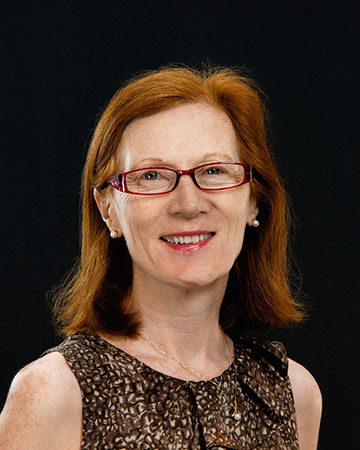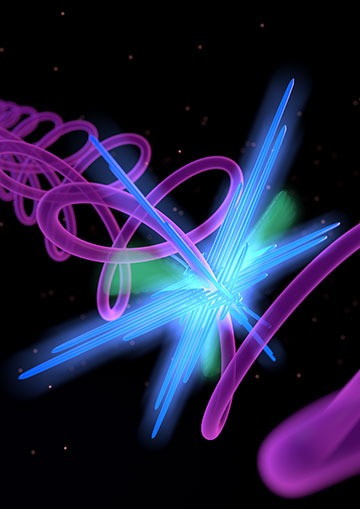
Margaret Murnane
High-harmonic quantum light sources have opened a pathway to harness short-wavelength light with unprecedented control. Margaret Murnane, director of the STROBE Science and Technology Center on Real-Time Functional Imaging and a Fellow of JILA at the University of Colorado, Boulder, USA, has spent decades working with ultrafast laser and X-ray sources. She is an OSA Fellow and the 2017 recipient of the society’s highest honor, the Frederic Ives Medal/Jarus W. Quinn Prize.
Murnane will speak about the recent progress in her field in a plenary address at the CLEO Technical Conference and Exhibition from 09 to 14 May. She talked with OPN about some of the “exquisite quantum physics” enabling high-harmonic light sources, as well as some of the applications those sources are making possible.
How far has the field come since you published your first paper on ultrafast X-ray sources in the 1980s?
Progress in this research area in the last 30 years has been really amazing. For my thesis work, we essentially demonstrated an X-ray lightbulb—producing the shortest X-ray burst to date at that time, at 1.1 +/–1 picoseconds. Now, we’re making measurements six orders of magnitude faster, in the attosecond regime.
We can generate directed laser-like beams throughout the ultraviolet, extreme-ultraviolet and soft X-ray region of the spectrum. And scientific applications of ultrafast X-rays have blossomed, especially in materials and imaging science.
As you said, the timeframes have gotten so much shorter. Science has crossed the attosecond frontier—can it go even further?
Absolutely. With colleagues in Spain and Boulder, we’ve collaborated on a theory paper that one can, in principle, make pulses that have a bandwidth that can support even sub-attosecond duration pulses, or zeptosecond pulses. (I love that word—zeptosecond!)
But one thing to think about is that only very light, small particles such as electrons have dynamics in the attosecond range. So rather than thinking in the time domain, the more significant thing that attosecond physics allows is that we can essentially make an X-ray waveform generator that spans from the UV through the soft X-ray region of the spectrum.
The most significant advance in attosecond science is the high-harmonic generation itself—it is fundamentally an attosecond process, that is having real impact on light and materials science.
Talk a bit more about this process. How does it provide such precise control over light?
In high-harmonic generation, a femtosecond laser is used to create a nanoscale quantum antenna by manipulating the electron wavefunction in an atom that is being ionized in a femtosecond laser field. By sculpting the waveform and shape of the driving laser, we can control the laser wavelength, pulse duration, phase, polarization and shape of the generated high harmonics, to sculpt X-ray beams using near-infrared laser light.
To make bright extreme UV and X-ray beams, we have to control where and when they are generated, to a sub-angstrom level in space and sub-attosecond in time. Technologically, we have no electronics that can help us achieve this. But it turns out that quantum physics does this naturally. That’s why it’s so amazing that once you understand the physics, you can actually engineer the generation conditions so that phase matching occurs passively. Then it just happens! It’s beautiful that quantum physics is one solution to the enormous challenge of building X-ray lasers.
What are some of the most exciting applications for harnessing quantum light?

Generation of bright circularly-polarized high-harmonic beams. Electrons (green) are ripped from noble gas atoms by combined circularly polarized red and blue femtosecond laser fields (purple). Some electrons recombine with their parent ions to generate intense flashes of circularly polarized extreme UV light (blue). [Credit: The Kapteyn/Murnane group and Steve Burrows, JILA]
There are several. One way to think about it is that almost all advanced applications of lasers require precise control over light. Now, we can take almost any application of lasers—whether it’s in metrology or probing materials or microscopy and such—and extend these applications to shorter wavelengths, and also invent new ways for probing matter.
One good example is microscopy. X-rays can penetrate samples that are opaque to visible light, and you don’t need to destroy the sample like you do for electron imaging. But there was a big problem with X-ray microscopes—for the past 60 years, the highest spatial resolution that could be routinely achieved was about 10 times the diffraction limit, or 10 times more blurred than the wavelength—because it is very challenging to make a perfect X-ray lens.
However, if you have a coherent beam of X-rays, you can shine it on a sample and collect the scattered light. There’s no image-forming optics in the beam, but you can use a phase-retrieval algorithm and still recover the object. And since there are no optics between the sample and the detector, you can actually reach subwavelength resolution in a full-field imaging geometry.
Another exciting application is a better understanding of how to engineer more energy-efficient heat , spin or charge transport in semiconductor, magnetic and 2D materials. In one very surprising finding, for example, our students were exploring nanoscale thermal transport away from arrays of hotspots and nanogratings. Quite surprisingly, they found that at the nanoscale, the hotspots will cool faster if you pack them closer together. Six years later, we now understand the new materials behavior underlying this finding.
It’s very counterintuitive, which is why we love making these discoveries.
What are what are some problems in industry that these sources could solve?
Rich Haight at IBM has been a pioneer in using harmonic light sources since the mid-1990s. He used them, for example, to look at band bending in semiconductors, to measure parameters that cannot be measured other ways.
More recently, Henry Kapteyn and his co-workers led the way in pushing the commercialization and engineering of high-harmonic light sources. KM Labs worked recently with Imec, the premier semiconductor R&D facility in Belgium, to install two high-harmonic systems to study next-generation photoresists and other advanced materials. They’re having great success in printing very small lines and pushing to smaller dimensions.
What are you and your team working on right now in this space?
We’re working on understanding 2D and magnetic materials because we’re seeing all kinds of new behaviors as well as the ability to manipulate quantum materials with light. If you probe these materials with visible light, often one measures the average material property, so you don’t actually see what’s going on in the material. As a result, people thought of femtosecond lasers as almost a hammer that over-excited a material—not suitable for interacting with a delicate quantum material. What we’re finding is that if you have the right probes, you can actually see what’s going on, allowing us to learn how to use femtosecond lasers to very precisely manipulate these materials.
More practically, we’re working on enhancing and pushing the resolution of X-ray microscopes to visualize spin texture, and pushing X-ray imaging to the quantum noise-detection limit. There there is a great convergence of detector technologies, source technologies and applications that really need these new capabilities.
What are some of the obstacles to overcome in this field?
This is something the community is working very hard on: If we really want to push these light sources into the hard X-ray regime, we need better mid- and far-infrared drive lasers. Fiber lasers have been explored for quite a while, but it’s taken a long time to be able to make them efficient drive lasers for high harmonics. It’s really just a technology maturation issue, and they’re getting there.
This is very interesting quantum physics because experiment and theory have to go in lockstep. It turns out that, if you use a mid-infrared or far-infrared laser to drive high-harmonic generation to the hard-X-ray regime, then your laser wavelength is getting longer, but the X-ray wavelength is getting shorter. You need to model what you’re doing to the electron wavefunction in three dimensions, essentially combining Maxwell’s equations with the 3D time-dependent Schrödinger equation—there is no computer that can do that. Fortunately, theory collaborators in Salamanca and Boulder are pushing forward, in parallel with infrared laser technology development. This makes it possible to push experiments, find the approximate theories, validate them, and slowly try to figure out the limits of this exquisite quantum technology.
